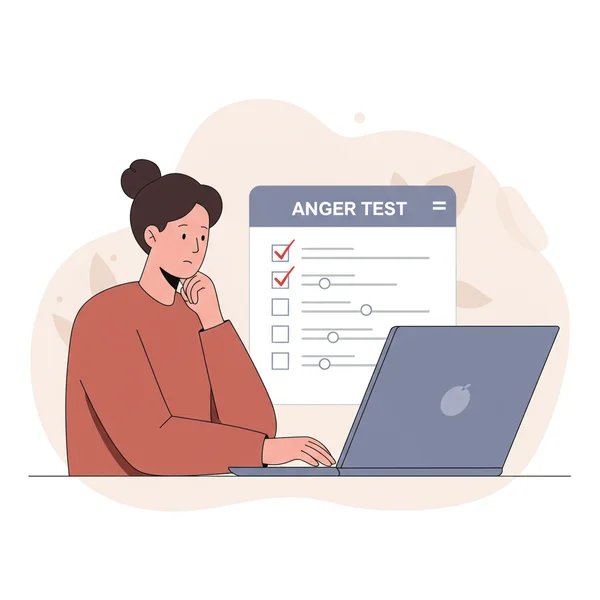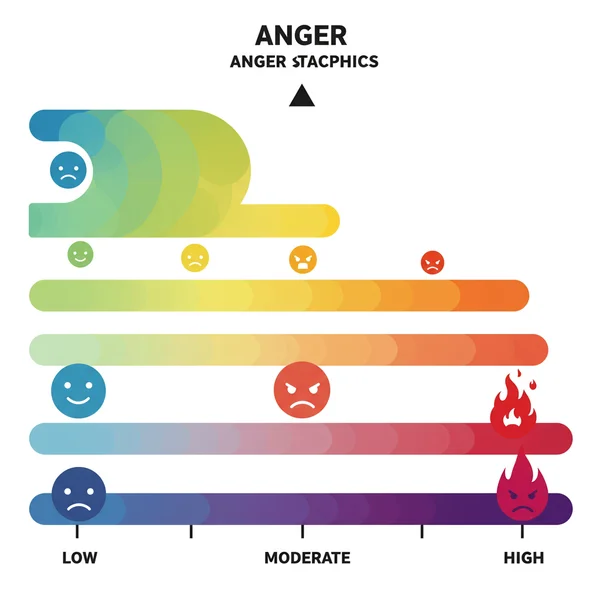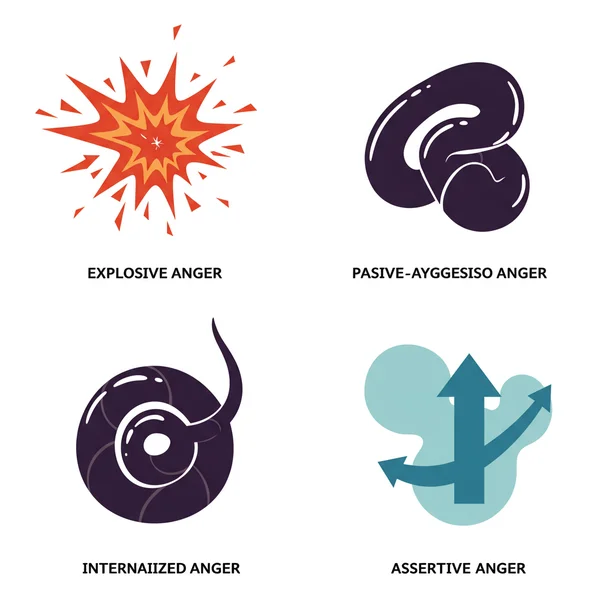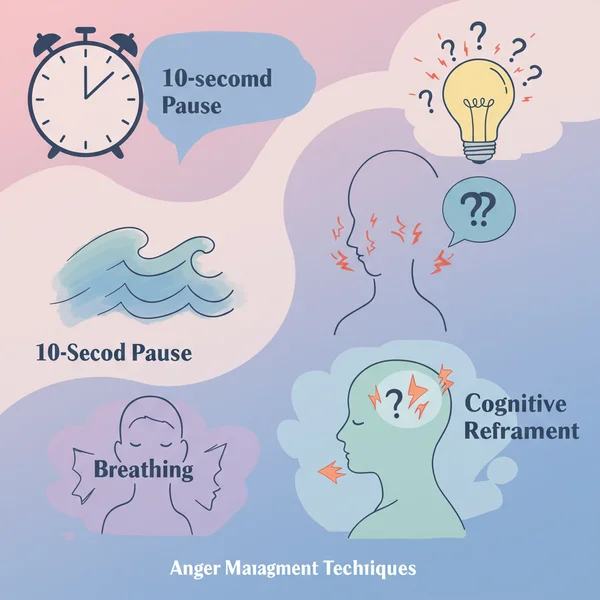Anger Test Results Explained: Insights & Next Steps
Taking an anger test is a brave and insightful move towards understanding yourself better. Now that you've completed the assessment, you might be wondering what your results truly mean and how they apply to your daily life. This guide will help you interpret your anger test results, turning numbers and summaries into clear insights and practical steps. Let's explore what your personalized report reveals about your anger patterns.
Understanding your emotional patterns can be incredibly beneficial. This interpretation guide will help you decipher your score, recognize your unique anger style, and identify what to do next. Whether your results were expected or surprising, they are a valuable tool. If you ever wish to track your progress, you can always revisit the free anger test to take it again.
Understanding Your Anger Test Results
Your results from our anger assessment test are more than just a single label; they are a snapshot of your current emotional responses. To interpret your score accurately, it's important to first understand what the test is designed to measure. This isn't about judging you, but about providing a clear, objective look at your patterns.

What Does Our Multidimensional Anger Test Measure?
The power of the AngerTest.org assessment lies in its multidimensional approach. Rooted in established psychological principles, our multidimensional anger test doesn't just ask "if" you get angry, but "how." It examines several key facets of your anger, including:
- Frequency: How often you experience feelings of anger.
- Intensity: The strength of your anger when it arises, from mild irritation to intense rage.
- Duration: How long the feeling of anger typically lasts for you.
- Triggers: The common situations, thoughts, or interactions that provoke your anger.
- Expression: How you typically behave when you feel angry (e.g., expressing it outwardly, holding it in, or acting passive-aggressively).
By looking at these different dimensions, the test provides a much richer and more nuanced profile of your relationship with anger.
Deciphering Your Anger Score Ranges
Your report likely places your results within a range, such as low, moderate, or high. Here’s a general guide to what these anger score ranges might suggest:
- Low Score: This typically indicates that you experience anger infrequently and with low intensity. You likely have effective strategies for managing frustration and conflict, and anger does not significantly disrupt your life.
- Moderate Score: This suggests that you experience anger with some regularity or intensity. While you may have some control over it, anger might still cause occasional problems in your relationships, work, or overall well-being. This range often signals a great opportunity for growth.
- High Score: A high score points to frequent, intense, or long-lasting anger that may be negatively impacting multiple areas of your life. It suggests that your current methods of coping with anger may be ineffective or even harmful. This is a clear signal that it's time to focus on developing healthier emotional skills.

What Your Score Reveals About Your Anger Patterns
With the test's framework in mind, let's dive into the anger assessment insights your score offers. Think of your results as a reflection, showing not just a number, but the deeper habits that shape your emotional responses. Seeing these patterns clearly is the first step towards transforming them.
Identifying Common Anger Styles
Your answers on the anger issues test can point toward a specific style of expressing anger. While everyone is unique, many people fall into common patterns. Do any of these resonate with your results?
-
Explosive Anger: Characterized by outward, often loud and aggressive outbursts. This style is easy to spot but can be very damaging to relationships.
-
Passive-Aggressive Anger: This is an indirect expression of anger. It can manifest as sarcasm, silent treatment, procrastination, or subtle sabotage.
-
Internalized Anger: This involves suppressing or turning anger inward. It can contribute to issues like depression, anxiety, and physical health problems.
-
Assertive Anger: This is the healthiest style. It involves expressing your feelings and needs directly, respectfully, and without aggression.

Understanding Triggers and Their Impact
Perhaps the most practical insight from your test is the identification of your anger triggers. Your results can help you see a connection between certain situations and your emotional response. Do you notice a pattern of anger related to work deadlines, family conflicts, feeling disrespected, or dealing with injustice?
Understanding what sets you off is like having a map. Once you know where the emotional landmines are, you can either learn to navigate around them or work on defusing them. Reflect on your recent experiences and see how they align with the patterns suggested by your free online test.
Your Next Steps: Action After Your Anger Assessment
Receiving your results is not the end of the journey—it's the beginning. The goal of any anger management test is to empower you with knowledge so you can take informed action. Here are practical and effective next steps you can take today.
Embracing Self-Awareness and Reflection
Your test results are a data point, not a final judgment. The most powerful thing you can do right now is to practice self-awareness. Sit with your results. Think about specific instances where your anger style and triggers showed up in your life. Don't judge yourself; just observe. Journaling can be an excellent tool for this, allowing you to connect your results to real-life events and understand your anger more deeply.
Exploring Anger Management Techniques
Armed with self-awareness, you can begin exploring anger management techniques. You don't have to make massive changes overnight. Start with small, simple practices:
- The 10-Second Pause: When you feel anger rising, commit to pausing for just 10 seconds before you speak or act.
- Deep Breathing: Inhale slowly for four counts, hold for four, and exhale for six. This simple exercise calms your nervous system.
- Cognitive Reframing: Challenge the angry thought. Ask yourself: "Is there another way to look at this situation?"
These techniques are skills, and like any skill, they improve with practice.

When to Consider Professional Support
It is crucial to remember that this scientifically-backed anger test is an educational tool, not a clinical diagnosis. While it provides valuable insights, it cannot replace the guidance of a qualified professional.
Consider seeking support from a therapist or counselor if:
- Your anger feels uncontrollable.
- It has led to violence or the threat of violence.
- It is causing significant harm to your relationships, career, or health.
- You are using substances like alcohol to cope with your anger.
Reaching out for help is a sign of strength and a proactive step toward building a healthier, happier life.
Empowering Your Journey to Emotional Well-being
Your anger test results provide a unique lens into your emotional landscape. They've given you clarity on your patterns, a deeper understanding of your triggers, and a path forward. You've already done the vital work of seeking self-understanding, and that in itself is empowering. Keep using these insights to reflect and grow. Remember to be patient with yourself as you navigate your emotions—it's a journey, not a destination. If you ever want to check your progress or find more helpful tools, feel free to revisit AngerTest.org.
Frequently Asked Questions About Anger Test Results
Do I Have Anger Issues Based on My Test?
Your results from the anger problems test provide insight into your emotional patterns. A high score suggests that anger may be a challenging emotion for you and that you could benefit from developing new coping strategies. However, the test does not provide a clinical diagnosis of "anger issues." It's best used as a tool for self-reflection.
What Exactly is an Online Anger Test?
An online anger test is a self-assessment questionnaire designed to help you explore and understand different facets of your anger. The test at AngerTest.org is based on scientific psychological models to measure the frequency, intensity, and expression of your anger, giving you a comprehensive overview for personal insight.
Can This Anger Test Diagnose a Condition?
No, absolutely not. The anger test on our site is intended for informational and educational purposes only. It is not a substitute for a professional clinical evaluation. For a diagnosis of any mental health condition, please consult a licensed psychologist, therapist, or medical doctor.
How Do I Know if My Anger is a Problem?
A key question many people ask is, "how to know if I have anger problems?" A good indicator is the impact anger has on your life. If it consistently leads to negative consequences—such as damaging relationships, trouble at work, legal issues, or poor physical and mental health—then it is a problem worth addressing.
How Can I Start Controlling My Anger?
The first step is awareness, which you've already started by taking the test. Begin by practicing simple anger control test techniques like the 10-second pause or deep breathing when you feel triggered. Acknowledging your feelings without immediately acting on them is a powerful starting point.